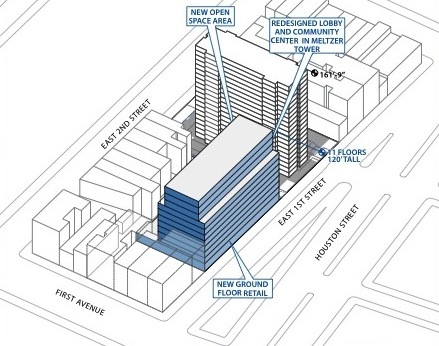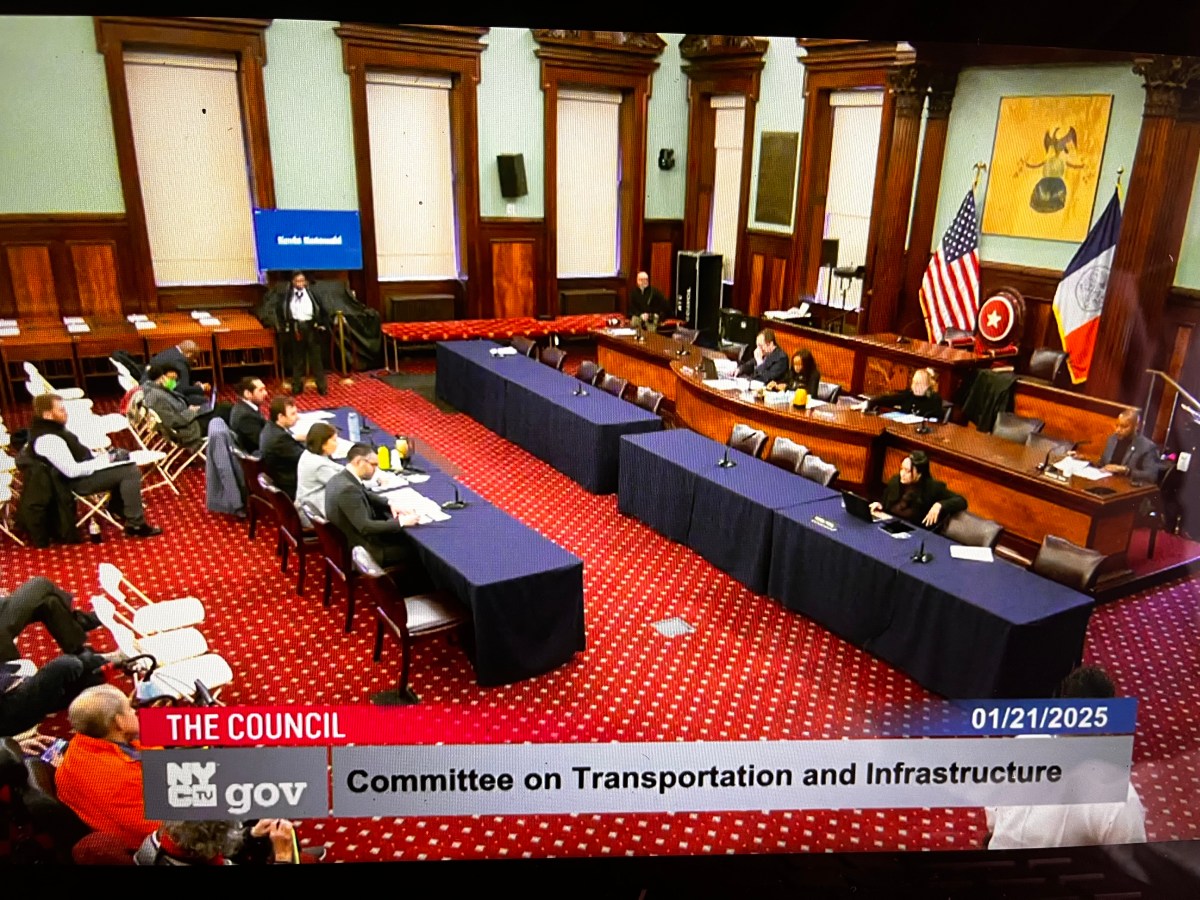
By SAM SPOKONY | The New York City Housing Authority said on Dec. 20 that site designations for its land-lease plan — which would place luxury housing within its public developments — will not go forward before the end of this year, leaving the door wide open for new Mayor Bill de Blasio to quash the plan, or at least change it, once he takes office in January.
While NYCHA’s statement was widely reported in the sense that the land-lease — or “infill” — proposal was finally in real danger of being killed, it was, in fact, not the first time that sources at the Housing Authority have admitted that the plan would not have a chance to solidify under the currrent administration.
Based on conversations with this newspaper, the authority knew as early as a month ago — shortly after proposals from private developers were received on Nov. 18 — that the infill plan would not move quickly enough to be fully entrenched, in its current form, before the end of the Bloomberg administration.
In any case, the decision will soon be up to de Blasio, who has remained somewhat unclear on exactly whether or not he will continue the infill in some altered form.
“Mayor-elect de Blasio has been clear in his opposition to the Bloomberg administration’s infill program,” a de Blasio spokesperson told the New York Observer in a recent statement. “As he’s said, for any plan to be considered, it must create affordable housing, create jobs for NYCHA residents, and steer money back into NYCHA to address its backlog of maintenance and repairs.”
In its Dec. 20 release, NYCHA also gave an update on responses to the infill plan as it stands now, saying that developers offered proposals for 11 of the 14 total land-lease sites, within six of the eight developments that are targeted in the plan.
Those eight developments are the Lower East Side’s LaGuardia Houses, Smith Houses and Baruch Houses; the East Village’s Campos Plaza and Meltzer Tower; and Upper Manhattan’s Douglass Houses, Carver Houses and Washington Houses.
The Housing Authority did not disclose any details about which six of the developments garnered proposals, but stated that, taking the highest offer at each land-lease site, rent payments from the developers to NYCHA would average a total of $37 million per year.
In its release, NYCHA claimed that that money, “based on financial projections,” would be sufficient to finance the $700 million to $900 million required for full exterior and interior upgrades and restoration of the more than 9,000 NYCHA homes located within the six developments.
Since, under the current plan, developers would have to build so-called “80/20” housing on the sites, 720 out of around 3,600 new apartments built in those six developments would be permanently affordable. The other 80 percent of the units would be available at market rate.
But this may, in fact, be the last that New Yorkers hear of the infill plan in its current form. If de Blasio does not scrap the plan outright, it seems likely that he will at least amend it — especially because opposition against the current plan would probably also continue to come from the new City Council speaker.
Councilmember Melissa Mark-Viverito, whose Upper Manhattan district includes three of NYCHA’s proposed land-lease developments, last week claimed victory in the speaker’s race, saying she had secured 30 councilmembers’ votes. However, the outcome of that contest may not be decided until after the Council convenes again in January.
Mark-Viverito has, numerous times, called on the Housing Authority to kill the current plan, and was a co-sponsor of a Council resolution urging the state Legislature to require NYCHA to follow the city’s Uniform Land Use Review Procedure, or ULURP, in any lease or sale of its properties.
Councilmember Dan Garodnick is also vying for speaker.
Christine Quinn, whose tenure as speaker is about to end, previously brought a lawsuit against the infill program. Although a judge recently dismissed the suit, the decision in that case allows for a new suit to be brought in the coming year, once — or if — NYCHA has a chance actually to finalize its choices for the developers of each infill site.




































